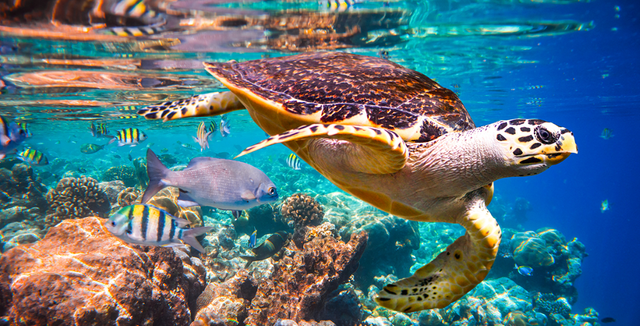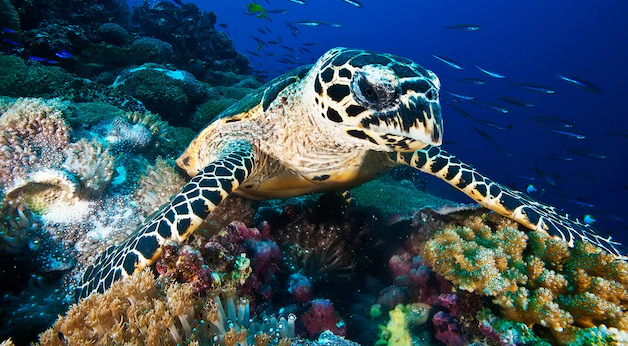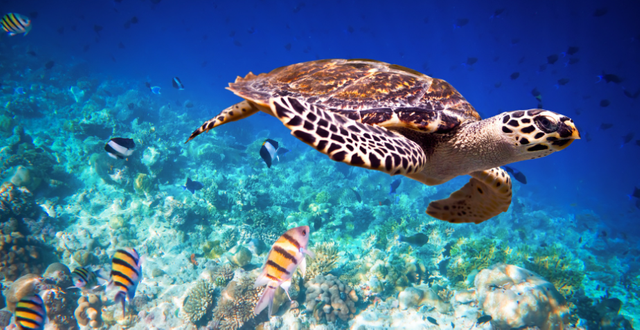
Facts:
STATUS: Critically Endangered
SCIENTIFIC NAME: Eretmochelys imbricata
WEIGHT: 90-150 pounds
LENGTH: 30-35 inches
HABITATS: Oceans
Hawksbills are named after its sharp, narrow beak. On their shells, they have a characteristic pattern of overlapping scales that produce a serrated edge. These colorful and patterned shells are highly valued and are usually sold in marketplaces as "tortoiseshell."
Hawksbill turtles can be found in the world's tropical oceans, mostly in coral reefs. They devour sponges, which they pull from crevices in the reef with their narrow pointed beaks, but they also eat sea anemones and jellyfish. Sea turtles are live representatives of a species of reptiles that have existed on Earth for the past 100 million years and have sailed our oceans. They are a vital connection in marine ecosystems, helping to keep coral reefs and sea life healthy.

Why They Matter
Hawksbill turtles contribute to the health of coral reefs. They make it easier for reef fish to feed by removing prey such as sponges off the reef's surface. They are also culturally significant and have tourism potential. The influx of visitors who come to admire turtles, for example, is a crucial source of money for local communities in the Coral Triangle.
Threats
Loss of nesting and feeding grounds, excessive egg harvesting, fishery-related mortality, pollution, and coastal development all pose threats to hawksbill sea turtles. Wildlife trade, on the other hand, poses the greatest threat to them.
Illegal Wlidlife Trade
Despite the fact that hawksbill shells and goods are protected under the Convention on International Commerce in Endangered Species of Wild Fauna and Flora (CITES) and many national laws, there is still an alarming amount of unlawful trade in them. They are prized throughout the tropics for their stunning brown and yellow carapace plates, which are used to make tortoiseshell jewelry and ornaments. Eastern Asia has been a thriving market for tortoiseshell in recent decades.

Fisheries Bycatch
Hawksbills are especially vulnerable to becoming entangled in gillnets and being accidentally caught on fishing hooks. Because sea turtles need to breathe at the surface, many of them perish when caught. Bycatch, often known as accidental capture, is a severe threat to hawksbill turtles. As fishing activity grows, this issue becomes increasingly serious.